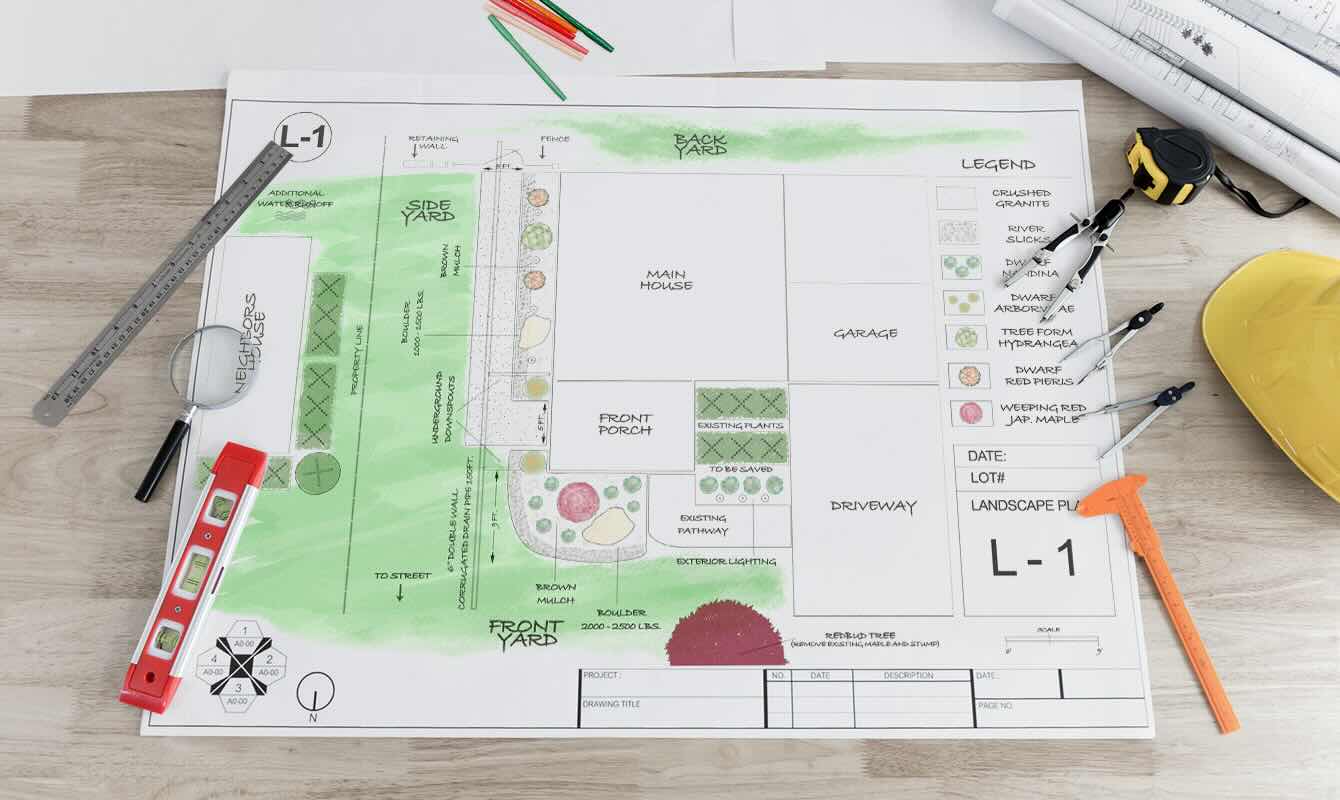Home>diy>Building & Construction>Who Invented The Construction Process


Building & Construction
Who Invented The Construction Process
Modified: January 4, 2024
Discover the genius behind the building construction process and the mastermind responsible for inventing this essential industry technique.
(Many of the links in this article redirect to a specific reviewed product. Your purchase of these products through affiliate links helps to generate commission for Storables.com, at no extra cost. Learn more)
Introduction
Construction is a fundamental aspect of human civilization, allowing us to create magnificent structures that serve a variety of purposes. From ancient times to the modern era, the construction process has evolved significantly, incorporating innovative techniques and technologies to ensure safer and more efficient building practices.
But who exactly invented the construction process? The origins of construction can be traced back thousands of years, when early humans began harnessing their environment to construct shelters and structures to meet their basic needs. Over time, these primitive construction methods evolved, leading to remarkable advancements in architecture and engineering.
In this article, we will explore the fascinating origins of construction and delve into the influential individuals and cultures that have contributed to the development of the construction process as we know it today. From ancient civilizations to modern innovations, this journey will provide a comprehensive understanding of the rich history and continuous evolution of building techniques.
Join us as we embark on a captivating exploration of the remarkable world of construction, celebrating the ingenuity and creativity of those who have shaped this essential field.
Key Takeaways:
- The construction process has evolved from primitive methods to modern innovations, driven by human ingenuity and the desire to create remarkable structures that stand the test of time.
- Influential individuals and cultures, from ancient innovators to modern visionaries, have shaped the construction industry, leaving an indelible mark on architecture, engineering, and building practices.
Read more: What Is The Construction Process
Origins of Construction
The origins of construction can be traced back to the dawn of human civilization. As early as 10,000 years ago, our ancestors began constructing crude structures such as huts and shelters, primarily using natural materials like wood, stones, and animal hides. These primitive constructions were essential for protection from the elements and predators, marking the beginning of human ingenuity in creating a built environment.
Prehistoric humans discovered that by utilizing simple tools like rocks and animal bones, they could modify their surroundings to meet their needs. This involved activities such as digging pits, creating foundations, and assembling basic frameworks. Though rudimentary in nature, these early construction practices laid the foundation for the development of more advanced building techniques.
As human societies evolved and communities began to settle in specific areas, the need for more permanent structures emerged. This led to the development of more sophisticated construction methods that could withstand the test of time. One of the earliest examples of such advancements is the use of mud bricks by ancient Mesopotamian civilizations around 4000 BCE. These bricks, made from a mixture of clay, water, and straw, were dried in the sun to create durable and sturdy building materials.
Another significant milestone in the history of construction was the invention of mortar by the ancient Egyptians around 2600 BCE. The use of mortar, made from a combination of sand, lime, and water, allowed for the construction of large-scale structures such as temples and pyramids, revolutionizing the architecture of the time.
Throughout history, different cultures and civilizations contributed their unique construction techniques and architectural styles. The ancient Greeks, for example, developed ingenious building methods that incorporated marble and precise structural elements like columns and arches. The Romans further refined these techniques and introduced innovations such as the use of concrete, enabling them to construct grand structures like the Colosseum and aqueducts.
From mud bricks to mortar and the mastery of structural elements, the origins of construction are deeply rooted in the human instinct to adapt and transform the environment. These early innovations paved the way for the exponential growth of construction practices, leading to the remarkable structures we marvel at today.
Ancient Construction Techniques
Ancient civilizations around the world developed remarkable construction techniques that still awe us today. These techniques were driven by a combination of practical needs, available resources, and a desire to create impressive architectural marvels. Let’s explore some of the ancient construction techniques that have left a lasting impact on the world.
One of the most well-known ancient construction techniques is the use of stone as a primary building material. Ancient Egyptians, for instance, were masterful in quarrying and carving massive stones to construct their world-renowned pyramids. The precision with which these stones were cut and placed together showcases the extraordinary skill and ingenuity of their builders.
In South America, the Inca civilization is renowned for their incredible stonework, particularly in the construction of Machu Picchu. The Inca used a technique called “ashlar masonry,” in which large stones were precisely cut and fit together without the use of mortar. The interlocking stones created sturdy and earthquake-resistant structures that have withstood the test of time.
In ancient India, the technique of “Vastu Shastra” was followed in the construction of religious and residential buildings. Vastu Shastra is an architectural science that incorporates the use of specific measurements, orientations, and materials to create harmonious and balanced structures. This ancient system continues to influence construction practices in modern-day India.
Ancient Greece introduced the concept of the “post-and-lintel” construction method, which heavily relied on the use of columns and beams. The Parthenon, a symbol of Greek architecture, exemplifies this technique with its rows of Doric columns supporting the grand structure above.
The Romans introduced the technique of “vaulting” and “domes” in their construction practices. By using arches and semi-circular shapes, they created massive domed structures such as the Pantheon. The Roman aqueducts also showcase their mastery of arches and the ability to transport water over long distances.
These ancient construction techniques not only testify to the ingenuity and technical skill of our ancestors but also demonstrate their understanding of aesthetics and functionality. These techniques served as the bedrock for future advancements in construction, laying the foundation for the structures we admire today.
Innovations in Construction
Throughout history, construction has constantly evolved through innovative ideas and techniques. As societies advanced and new challenges arose, architects, engineers, and builders pushed the boundaries of what was possible, resulting in groundbreaking innovations in the field of construction. Let’s explore some of the notable advancements that have revolutionized the industry.
One significant innovation in construction is the use of reinforced concrete. This technique combines the strength and durability of concrete with the tensile strength of embedded steel reinforcement. Developed in the 19th century, reinforced concrete allowed for the construction of taller, stronger, and more structurally sound buildings and bridges. This innovation laid the groundwork for the modern skyscrapers and expansive infrastructure we see today.
The introduction of the elevator was another game-changer in construction. Before its invention, buildings were limited in height due to practical constraints. However, the elevator, patented by Elisha Otis in 1852, made it possible to transport people and goods vertically, revolutionizing the concept of vertical construction. With elevators, buildings could now soar to new heights, leading to the birth of the modern skyline and urban landscapes.
Advancements in materials science also played a vital role in transforming construction. The discovery and development of steel as a structural material allowed for the construction of massive industrial buildings, bridges, and towers. Steel’s strength, flexibility, and resistance to fire made it a game-changer in the construction industry, enabling architects and engineers to push the boundaries of design and take on ambitious projects.
In recent years, advancements in sustainable construction practices have gained significant attention. As the impact of human activities on the environment became more apparent, construction professionals have sought ways to minimize the carbon footprint of projects. This has led to the widespread adoption of green building techniques, including energy-efficient designs, use of recycled materials, and implementation of renewable energy sources.
Furthermore, the rise of Building Information Modeling (BIM) has transformed the way construction projects are planned, designed, and executed. BIM is a digital representation of a building’s physical and functional characteristics, allowing for enhanced collaboration between project stakeholders and improving efficiency and accuracy in construction processes.
These innovations, along with many others, have revolutionized the construction industry, enabling the creation of architectural wonders that were once unimaginable. With each new advancement, the boundaries of what is possible in construction continue to expand, leading to a remarkable and ever-evolving built environment.
The construction process as we know it today has evolved over centuries, with contributions from various civilizations such as the ancient Egyptians, Greeks, and Romans. The modern construction process has been shaped by advancements in engineering, technology, and materials.
Modern Construction Methods
Advancements in technology and engineering have dramatically transformed the construction industry, ushering in a new era of modern construction methods. These methods, often incorporating innovative techniques and cutting-edge equipment, have revolutionized the way buildings and infrastructure are designed, built, and maintained. Let’s explore some of the modern construction methods that are shaping the industry today.
One of the most prominent modern construction methods is prefabrication or modular construction. With this method, components of a building are manufactured off-site in a controlled factory environment and then transported to the construction site for assembly. Prefabrication offers numerous advantages, including shorter construction timelines, reduced costs, improved quality control, and increased sustainability by minimizing waste.
Another modern method gaining popularity is the use of robotics and automation in construction. Robotic systems can perform repetitive and physically demanding tasks with precision and efficiency, reducing the need for manual labor and enhancing safety. Automation is also utilized in the operation of heavy machinery, such as cranes and excavators, improving overall productivity and accuracy on construction sites.
With the advent of Building Information Modeling (BIM), digital tools and 3D modeling have become integral to modern construction methods. BIM allows for the creation of a detailed virtual representation of a building or infrastructure project, enabling collaboration, clash detection, and information sharing among project stakeholders. This technology helps streamline the design and construction processes, resulting in improved project coordination and reduced errors.
Green construction practices have gained significant traction in recent years. Modern construction methods place a strong emphasis on sustainability, incorporating energy-efficient designs, renewable energy sources, and environmentally friendly materials. The integration of green technologies, such as solar panels, rainwater harvesting systems, and smart building systems, allows for more eco-friendly and energy-efficient structures.
The rise of innovative materials has also had a major impact on modern construction methods. Advanced composites, such as carbon fiber and fiberglass, offer superior strength-to-weight ratios, making them ideal for applications where high strength and durability are required. Additionally, the development of nanotechnology has led to the creation of self-healing concrete and materials with enhanced thermal properties, further improving the efficiency and longevity of structures.
Modern construction methods are not limited to buildings alone. In infrastructure projects, techniques such as tunnel boring machines (TBMs) and precast concrete segments have revolutionized the construction of tunnels and bridges. These methods allow for faster and more efficient construction, reducing disruption to the surrounding area.
With the continuous advancements in technology and the growing emphasis on sustainability, modern construction methods continue to push the boundaries of what is possible in the industry. By embracing innovation and incorporating these methods, the construction sector is poised to create structures that are safer, more sustainable, and more efficient than ever before.
Read more: Who Invented The Stairs
Major Contributors to Construction
The development of the construction industry has been shaped by numerous notable individuals and cultures throughout history. From architects and engineers to visionary leaders and innovators, these major contributors have left a lasting impact on the field of construction. Let’s explore some of the influential figures who have significantly influenced the industry.
Imhotep – Imhotep, an ancient Egyptian architect and polymath, is credited with revolutionizing architecture and construction practices during the 27th century BCE. Not only was he the chief architect of the step pyramid of Djoser, but he also introduced the use of stone as a primary building material and implemented groundbreaking techniques that have stood the test of time.
Vitruvius – Marcus Vitruvius Pollio, a Roman architect and engineer, is known for his treatise “De Architectura” (On Architecture), written in the 1st century BCE. This influential work became the foundation for classical architectural principles and encompassed various aspects of construction, including design, materials, and construction methods.
Henry Bessemer – Henry Bessemer, a British engineer and inventor, revolutionized the steel industry in the 19th century with the development of the Bessemer process. This innovative method allowed for the mass production of steel, making it more accessible and affordable for construction projects worldwide. The use of steel became a driving force behind the construction of skyscrapers and other large-scale structures.
Le Corbusier – Charles-Édouard Jeanneret, known as Le Corbusier, was a pioneering Swiss-French architect and urban planner. He played a crucial role in the development of modern architecture, advocating for functional, efficient, and aesthetically pleasing designs. Le Corbusier’s architectural principles, known as the Five Points of Architecture, focused on open floor plans, pilotis (supporting columns), and façades free from structural constraints.
Frederick Law Olmsted – Frederick Law Olmsted, an American landscape architect, is renowned for his influential designs of urban parks, including Central Park in New York City. Olmsted’s designs emphasized the integration of natural elements into the urban environment, creating spaces that promote relaxation, recreation, and harmony with nature. His work laid the groundwork for the development of urban planning and landscape architecture.
Zaha Hadid – Zaha Hadid, an Iraqi-British architect, was celebrated for her groundbreaking designs characterized by fluid forms and innovative use of materials. Hadid’s architectural creations pushed the boundaries of what was considered possible, and her unique designs earned her numerous accolades, including being the first woman to receive the Pritzker Architecture Prize.
Elon Musk – Although primarily known for his contributions to the technology and automotive industries, Elon Musk’s endeavors have also had a significant impact on the construction sector. His company, The Boring Company, aims to revolutionize tunneling and transportation infrastructure with the development of innovative tunneling machines and underground transportation systems.
These are just a few examples of the major contributors who have shaped the construction industry. From ancient innovators to modern visionaries, their ideas, inventions, and designs have left an indelible mark on architecture, engineering, and construction practices.
Conclusion
The construction industry has come a long way since its humble beginnings, evolving into a complex and innovative field that shapes the way we live, work, and interact with our built environment. From ancient civilizations to modern-day visionaries, numerous individuals and cultures have contributed to the growth and development of the construction process.
We have explored the origins of construction, witnessing how early humans crafted crude structures to meet their basic needs. Over time, these primitive techniques evolved into sophisticated methods, enabling the creation of architectural wonders that continue to inspire us today.
Ancient construction techniques, such as the precise stone-cutting abilities of the Egyptians and the innovative stonework of the Inca, highlight the remarkable skills of our ancestors. These techniques set the stage for future advancements in architecture and engineering.
Throughout history, construction has seen numerous innovations. Reinforced concrete, elevators, green construction practices, and digital tools like BIM have revolutionized the industry, making structures taller, safer, more sustainable, and efficiently built.
Major contributors to construction, such as Imhotep, Vitruvius, Le Corbusier, and Zaha Hadid, have left their indelible marks on the industry. With their groundbreaking ideas, they have reshaped architectural principles, introduced innovative materials and techniques, and pushed the boundaries of what is possible.
As we move forward, the construction industry continues to embrace technological advancements, sustainable practices, and collaborative approaches. With the use of robotics, automation, prefabrication, and cutting-edge materials, the construction process becomes more efficient, environmentally friendly, and adaptable to the ever-changing needs of society.
In conclusion, the construction industry is a testament to human creativity, ingenuity, and adaptability. From the ancient methods of our ancestors to the modern techniques of our time, the construction process reflects our collective pursuit to build structures that are not only functional but also awe-inspiring. With each passing year, the industry evolves, driven by innovative minds and a commitment to creating a built environment that enhances our lives, enriches our communities, and stands as a testament to human achievement.
Frequently Asked Questions about Who Invented The Construction Process
Was this page helpful?
At Storables.com, we guarantee accurate and reliable information. Our content, validated by Expert Board Contributors, is crafted following stringent Editorial Policies. We're committed to providing you with well-researched, expert-backed insights for all your informational needs.















0 thoughts on “Who Invented The Construction Process”